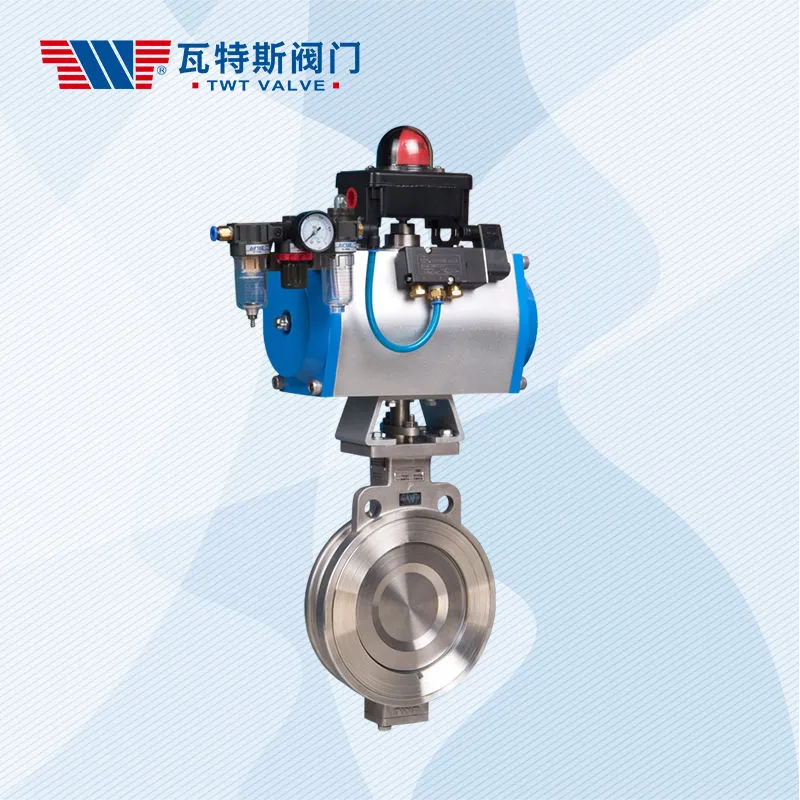Home » Posts tagged 'high performance butterfly valve'
Tag Archives: high performance butterfly valve
What are some factors to consider when selecting a high-performance butterfly valve for a specific application?
A high-performance butterfly valve is a type of valve commonly used in industrial applications to control the flow of fluids. It is designed to provide efficient and reliable performance in demanding conditions.
Here are some key features and characteristics of high-performance butterfly valves:
Construction: High-performance butterfly valves are typically constructed with a metal body, such as stainless steel or ductile iron, which provides durability and resistance to corrosion. The valve disc or “butterfly” is mounted on a shaft and can be made of metal or other materials depending on the application requirements.
Sealing Mechanism: These valves employ a resilient or metal-to-metal sealing mechanism. Resilient seals, often made of materials like EPDM or PTFE, provide tight sealing and are suitable for a wide range of fluids. Metal-to-metal seals, such as graphite or metal seats, are used for higher temperature or more aggressive applications.
Bi-Directional Shut-off: High-performance butterfly valves are designed to provide tight shut-off in both flow directions. This ensures that they can effectively stop the flow of fluid in either direction, preventing leakage and maintaining system integrity.
High Flow Capacity: These valves are known for their large flow capacity and low pressure drop. The streamlined disc and body design allow for efficient fluid passage, minimizing flow restrictions and maximizing flow rates.
Temperature and Pressure Ratings: High-performance butterfly valves are designed to handle a wide range of temperatures and pressures. The specific temperature and pressure ratings depend on the construction materials, seal type, and design specifications.
Actuation Options: Butterfly valves can be manually operated or automated using various actuation methods. Actuators, such as electric, pneumatic, or hydraulic actuators, can be attached to the valve to enable remote control and automation of the valve operation.
Versatility: High-performance butterfly valves are suitable for a wide range of applications across industries, including oil and gas, chemical processing, water treatment, power generation, and HVAC systems. They are often used for both on/off and throttling control applications.
Reliability and Maintenance: High-performance butterfly valves are designed for long service life and minimal maintenance requirements. Properly selected and maintained valves can provide reliable operation and withstand demanding conditions.
It’s important to consider the specific requirements of your application, such as fluid type, temperature, pressure, and flow characteristics when selecting a high-performance butterfly valve. Consulting with valve manufacturers or industry professionals can help determine the most suitable valve for your specific needs.
When selecting a high-performance butterfly valve for a specific application, several factors should be considered to ensure optimal performance and suitability.
Here are some key factors to consider:
Application Requirements: Understand the specific requirements of your application, including the type of fluid (liquid or gas), temperature range, pressure range, flow characteristics (such as velocity and turbulence), and any special considerations like corrosiveness or abrasiveness. This information will help determine the appropriate valve materials, seals, and design features.
Valve Size and Pressure Rating: Consider the required valve size based on the pipe diameter and flow rate of the system. Additionally, take into account the pressure rating needed to handle the maximum operating pressure without compromising performance or safety. Ensure that the selected valve meets or exceeds the required size and pressure ratings.
Construction Materials: Evaluate the compatibility of the valve materials with the fluid being handled and the surrounding environment. Consider factors such as corrosion resistance, temperature resistance, and mechanical strength. high performance butterfly valve Common materials include stainless steel, carbon steel, ductile iron, and various alloys. Select materials that can withstand the specific conditions of your application.
Sealing Mechanism: Determine the appropriate sealing mechanism based on the fluid characteristics and the desired level of sealing performance. Resilient seals, such as EPDM or PTFE, are commonly used for general applications. Metal seals or laminated seals may be required for high-temperature or aggressive fluid applications. Consider factors like sealing performance, maintenance requirements, and compatibility with the fluid.
Actuation Method: Decide whether manual operation or automated actuation is required for your application. Consider factors such as the need for remote control, speed of operation, and integration with control systems. Different actuation methods, such as electric, pneumatic, or hydraulic actuators, have their own advantages and considerations.
Flow Control Requirements: Determine if the valve will be used for on/off control or throttling control. Some high-performance butterfly valves are designed specifically for precise flow modulation, while others are better suited for simple open/close applications. Consider the flow characteristics of the fluid and the desired level of control.
Standards and Certifications: Ensure that the selected valve complies with relevant industry standards and certifications to guarantee quality, performance, and safety. Look for certifications such as API, ISO, ANSI, or specific industry standards applicable to your application.
Manufacturer and Supplier Reputation: Consider the reputation and track record of the valve manufacturer and supplier. Choose reliable and reputable companies known for producing high-quality valves and providing excellent customer support.
By carefully considering these factors, you can select a high-performance butterfly valve that meets the specific requirements of your application, ensuring efficient and reliable operation. Consulting with valve manufacturers or industry experts can provide valuable guidance in the selection process.
